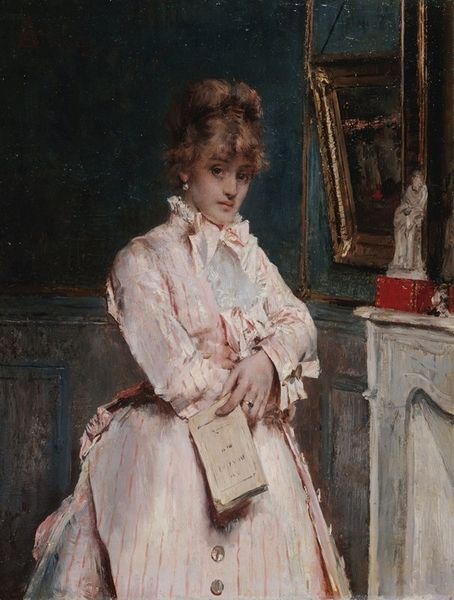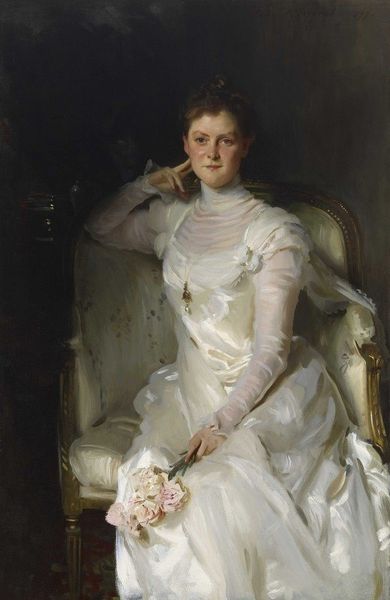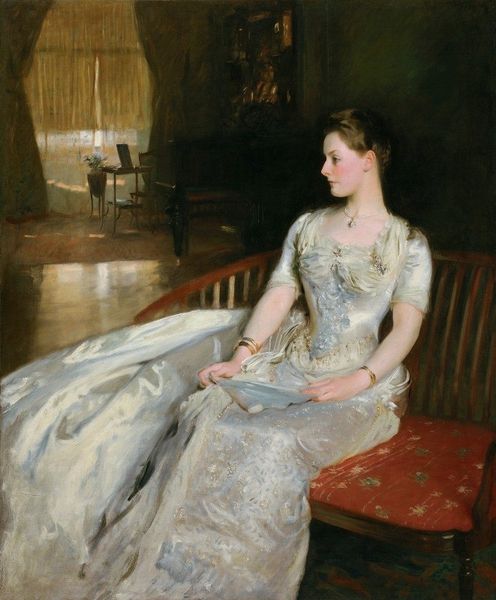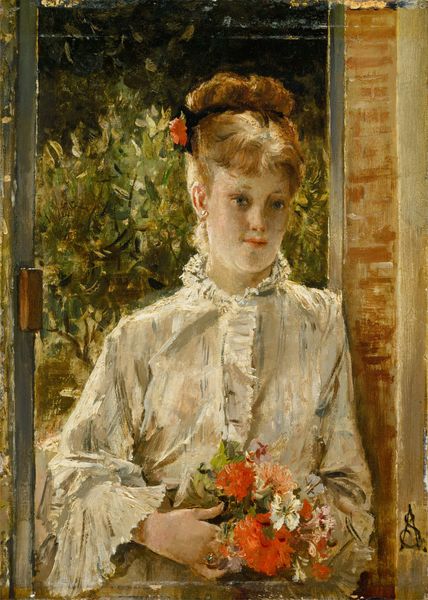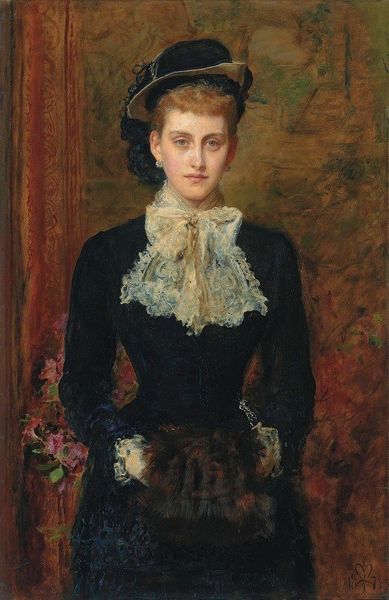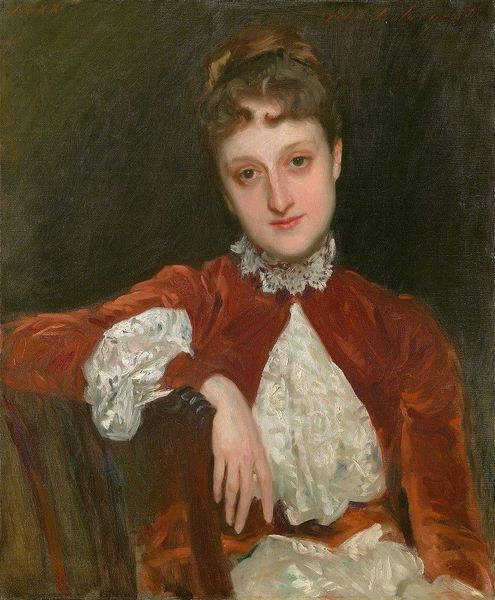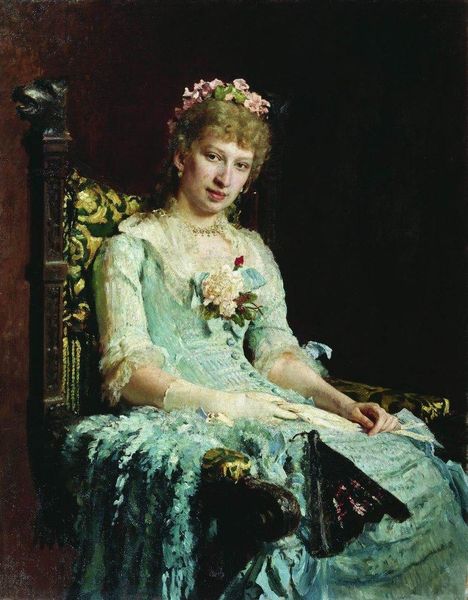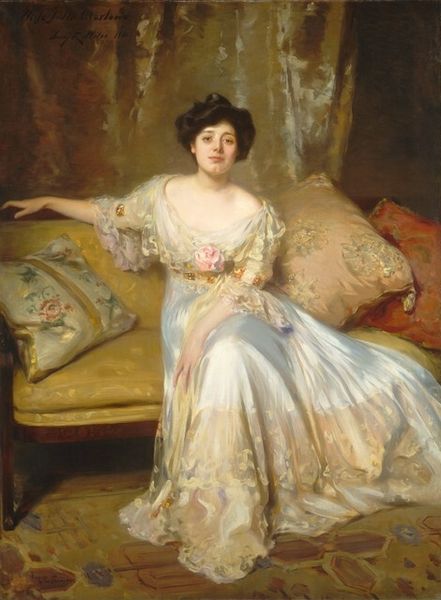
painting, oil-paint
#
portrait
#
painting
#
impressionism
#
oil-paint
#
oil painting
#
genre-painting
#
portrait art
Copyright: Public Domain: Artvee
Editor: So, here we have Berthe Morisot’s "The Pink Dress," painted around 1870. The wispy brushstrokes create this hazy, dreamy feeling, don't you think? Almost as if we are viewing her through a heat wave. What catches your eye in this piece? Curator: That “heat wave” you describe is precisely the sensation Morisot wants us to experience. Isn’t it extraordinary how she uses these dabs of colour to evoke such a palpable feeling? Look closely at the pink. It's not just pink; it's a conversation between shades – subtle pinks flirting with hints of lilac and cream, dissolving any sense of a hard edge. I think she is telling a story about feminine leisure, one steeped in soft pastels, conveying warmth. Do you notice how her gaze barely meets ours? Editor: Yes, there's a detachment to her stare. The fact that the artwork is not labeled, or at least not as prominently labeled as some other paintings here, also emphasizes that air of privacy, and even inaccessibility. She looks a bit… bored, almost? Curator: Perhaps. Or perhaps she is simply introspective, comfortable in her own space and, importantly, her own mind. Remember, Morisot was a rebel, defying societal constraints placed on women artists. Think about her deliberately choosing domesticity as a subject, imbuing it with such painterly freedom – she's quietly making a radical statement. What does that say to you? Editor: It changes the whole painting! I went in seeing boredom and now I see, potentially, an independent choice of perspective. Instead of a male gaze on domestic life, we have a female painter, capturing another woman as subject! Curator: Exactly! Morisot uses her innovative visual language to turn passive subject into powerful agent. And I find that fascinating. Editor: Me too! I’m walking away seeing it completely differently. Thanks!
Comments
No comments
Be the first to comment and join the conversation on the ultimate creative platform.
